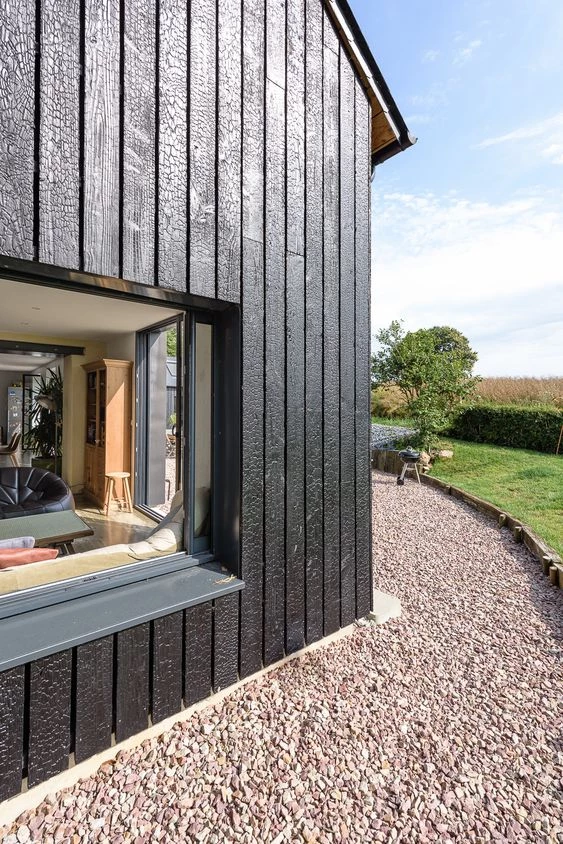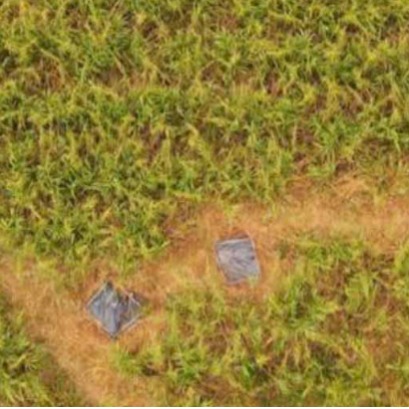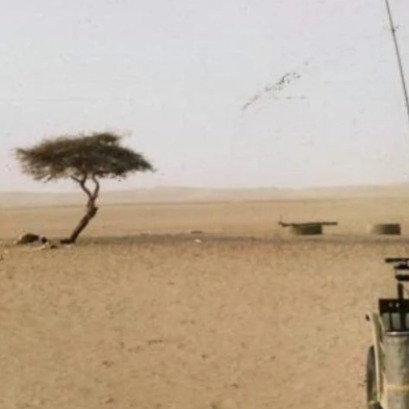
Yakisugi: the Japanese technique that is all the rage in architecture and decoration
Also known as Shou-Sugi-Ban, this technique dates back to the 16th century and its name comes from “yaki” (burning) and “sugi” (cypress). Today linden, pine, maple or oak are usually used.
But the most innovative thing is that it can be applied to ceilings, walls and floors, and also to furniture and accessories of all kinds. The only limit? Own imagination.
What is the technique of "burning" wood?
The technique consists of burning or charring the wood. This, in addition to generating an original finish, contributes to a longer useful life.
A blowtorch or chimney is used to burn the surface of the board. The wood must be dry and cut into long boards.
Then it is quenched with water, allowed to cool and brushed for a better finish. Finally, the wood is protected with protector, natural oils, varnishes, etc.
The slight carbonization of the wood surface makes it waterproof, flame retardant. It also protects it from the sun and works very effectively as an insect repellent. That is why this technique is an excellent option to use wood as an exterior coating.
Different uses and applications
• Floors, ceilings, walls and coverings.
• Furniture.
• Accessories
In wall covering you can combine different shades of burning, opt for different placement methods, play with the geometry of the boards, sizes, etc.", says the specialist.
And she adds that it is also often used on tables, chairs and kitchen islands or to decorate any object: from centerpieces and fountains to decorations and pots. Almost anything goes!
The technique of burning wood, in addition to generating an original aesthetic effect, helps give it a longer useful life. It also provides a touch of nature while incorporating sophistication and elegance through the black color and the texture of the wood.


IT MAY INTEREST YOU
 Vida Silvestre and ArgenINTA promote a national consultancy for the restoration of forest landscapes in Argentina
Vida Silvestre and ArgenINTA promote a national consultancy for the restoration of forest landscapes in Argentina
The Argentine Wildlife Foundation and the ArgenINTA Foundation signed a technical cooperation agreement to begin a consultancy aimed at the Restoration of Forest Landscapes (FPR) in the seven forest regions of the country. The work seeks to generate technical and scientific inputs that guide the design of provincial and national restoration programs, in support of the implementation of Law No. 26,331 on Native Forests.
 The only tree in the middle of the Sahara desert that was vital for commercial and military routes
The only tree in the middle of the Sahara desert that was vital for commercial and military routes
The Ténéré Tree, a solitary acacia in the Sahara desert, became for centuries a beacon of life and reference for travelers In the vast Sahara desert, where aridity and silence dominate the landscape, there was a tree that stood alone, being a beacon of life and hope for travelers.
 Trees tell stories: the fascinating science of dendrochronology
Trees tell stories: the fascinating science of dendrochronology
A fascinating science, dendrochronology transforms tree rings into a vast archive of climate history, revealing connections between the past and the future. With each ring, a new story of resilience and adaptation comes to life.





















